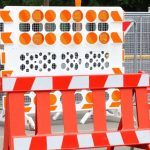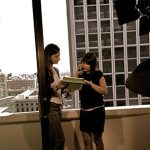Overview
Introduction to plastic speed bumps
Plastic speed bumps have emerged as a cost-effective solution for enhancing road safety. These bumps are made from durable plastic materials that are designed to withstand heavy traffic and adverse weather conditions. Unlike traditional asphalt speed bumps, plastic speed bumps are lightweight and easy to install, making them a popular choice for various road applications. Additionally, plastic speed bumps are highly visible due to their bright colors, alerting drivers to slow down and pay attention to their surroundings. With their affordability and effectiveness, plastic speed bumps have become an increasingly popular choice for promoting road safety in communities worldwide.
Importance of road safety
Road safety is of utmost importance in today’s world. With the increasing number of vehicles on the roads, it is crucial to ensure the safety of both motorists and pedestrians. Accidents on the road can have devastating consequences, leading to injuries, loss of life, and property damage. Implementing effective road safety measures can help prevent these accidents and create a safer environment for everyone. One cost-effective solution for road safety is the use of plastic speed bumps. These speed bumps are durable, easy to install, and highly visible, making them an effective tool for slowing down vehicles and reducing the risk of accidents. By using plastic speed bumps, authorities can effectively manage the speed of vehicles, ensuring safer roads for all users.
Cost-effective solutions for road safety
One cost-effective solution for road safety is the use of plastic speed bumps. These speed bumps are made from durable and lightweight materials, making them easy to install and maintain. Compared to traditional concrete speed bumps, plastic speed bumps are more affordable and can be quickly deployed in various locations. Additionally, plastic speed bumps are designed to effectively slow down vehicles, reducing the risk of accidents and improving road safety. Their cost-effectiveness makes them a practical choice for implementing road safety measures in communities and public areas.
Benefits of Plastic Speed Bumps
Reduced vehicle speed
Plastic speed bumps have proven to be a cost-effective solution for reducing vehicle speed on roads. These speed bumps are made from durable and impact-resistant materials, making them effective in slowing down vehicles without causing damage. By forcing drivers to slow down, plastic speed bumps help prevent accidents and improve road safety. Additionally, the installation of plastic speed bumps is relatively quick and easy, making it a convenient solution for road authorities. Overall, the use of plastic speed bumps has shown to be an efficient and cost-effective method for reducing vehicle speed and enhancing road safety.
Improved pedestrian safety
One of the key benefits of using plastic speed bumps is the improved pedestrian safety they provide. These speed bumps are designed to slow down vehicles and make drivers more cautious in areas where pedestrians are present. The bright colors and reflective strips on the speed bumps also increase visibility, making it easier for drivers to see and react to them. By reducing the speed of vehicles, plastic speed bumps help to prevent accidents and protect pedestrians from potential harm. Additionally, the use of plastic speed bumps can help create a safer environment for pedestrians by encouraging drivers to follow speed limits and be more aware of their surroundings.
Lower maintenance costs
One of the key advantages of using plastic speed bumps for road safety is the lower maintenance costs they offer. Unlike traditional concrete or metal speed bumps, plastic speed bumps require minimal maintenance. They are resistant to weather conditions and do not deteriorate easily. This means that there is no need for frequent repairs or replacements, saving both time and money. Additionally, plastic speed bumps are easy to clean and maintain, as they can be simply wiped or washed down. This makes them a cost-effective solution for road safety, as they help reduce long-term maintenance expenses.
Installation and Maintenance
Easy installation process
Plastic speed bumps offer an easy installation process, making them a convenient choice for road safety measures. Unlike traditional speed bumps that require extensive construction work, plastic speed bumps can be easily installed using adhesive or anchor bolts. This not only saves time and labor costs but also minimizes disruptions to traffic flow during the installation process. Additionally, the lightweight nature of plastic speed bumps allows for quick and hassle-free transportation and placement. Overall, the easy installation process of plastic speed bumps makes them a cost-effective solution for enhancing road safety.
Durability and longevity
Plastic speed bumps offer a durable and long-lasting solution for road safety. Unlike traditional asphalt speed bumps, plastic speed bumps are resistant to wear and tear caused by heavy traffic and harsh weather conditions. They are made from high-quality materials that can withstand constant use without deteriorating. Additionally, plastic speed bumps are designed to be UV resistant, ensuring that they do not fade or become brittle over time. This means that they can maintain their effectiveness and functionality for an extended period, providing a cost-effective solution for road safety.
Minimal maintenance requirements
Plastic speed bumps offer a cost-effective solution for road safety with minimal maintenance requirements. Unlike traditional asphalt speed bumps, plastic speed bumps are highly durable and resistant to wear and tear. They do not require frequent repainting or patching, saving time and resources. Additionally, plastic speed bumps are easy to clean and maintain, as they can be simply washed with water and mild soap. This low maintenance feature makes plastic speed bumps an ideal choice for busy roads and high-traffic areas, ensuring long-lasting road safety without significant upkeep costs.
Environmental Impact
Recyclable materials
Plastic speed bumps are not only effective in improving road safety, but they are also an environmentally friendly solution. Made from recyclable materials, these speed bumps can be easily recycled at the end of their lifespan. This not only reduces the amount of plastic waste in landfills but also promotes a sustainable approach to road safety. By choosing plastic speed bumps, we can contribute to the conservation of natural resources and the reduction of carbon emissions.
Reduced carbon footprint
Plastic speed bumps offer a cost-effective solution for road safety while also reducing the carbon footprint. Unlike traditional concrete speed bumps, plastic speed bumps are made from recycled materials, such as plastic bottles and containers. This not only helps to reduce the amount of plastic waste in landfills but also decreases the demand for new plastic production. By opting for plastic speed bumps, cities and municipalities can contribute to environmental sustainability by promoting the use of recycled materials and reducing carbon emissions associated with the manufacturing of new concrete speed bumps.
Less noise pollution
One of the major advantages of using plastic speed bumps for road safety is the reduction in noise pollution. Unlike traditional concrete or metal speed bumps, plastic speed bumps are designed to absorb and minimize the noise generated by vehicles passing over them. This is particularly beneficial in residential areas or near hospitals or schools where noise pollution can be a significant concern. By using plastic speed bumps, communities can effectively reduce noise levels and create a more peaceful and tranquil environment for residents and pedestrians alike.
Cost-effectiveness
Affordable initial investment
Plastic speed bumps offer a cost-effective solution for road safety due to their affordable initial investment. Unlike traditional speed bumps made of concrete or asphalt, plastic speed bumps are much cheaper to manufacture and install. This makes them a more accessible option for municipalities and organizations with limited budgets. Additionally, the installation process is relatively simple and quick, further reducing costs. Despite their lower price, plastic speed bumps are still highly effective in slowing down traffic and improving road safety.
Savings on repairs and replacements
Plastic speed bumps offer a cost-effective solution for road safety by providing substantial savings on repairs and replacements. Unlike traditional asphalt speed bumps, plastic speed bumps are durable and resistant to wear and tear caused by heavy traffic and harsh weather conditions. This means that they require less frequent maintenance and replacement, resulting in significant cost savings for municipalities and road authorities. Additionally, plastic speed bumps are easy to install and can be quickly and efficiently replaced if necessary, further reducing costs and minimizing disruption to traffic flow. Overall, opting for plastic speed bumps can help save valuable financial resources while ensuring the safety of drivers and pedestrians on the roads.
Long-term cost savings
One of the key benefits of using plastic speed bumps for road safety is the long-term cost savings they offer. Unlike traditional asphalt speed bumps, which require regular maintenance and repairs, plastic speed bumps are durable and have a longer lifespan. This means that municipalities and organizations that invest in plastic speed bumps can save money on maintenance and replacement costs in the long run. Additionally, plastic speed bumps are easy to install and can be quickly and inexpensively replaced if needed. Overall, the use of plastic speed bumps can provide a cost-effective solution for road safety while minimizing long-term expenses.
Conclusion
Summary of benefits
Plastic speed bumps offer several benefits that make them a cost-effective solution for road safety. Firstly, they are highly durable and can withstand heavy traffic and extreme weather conditions. This ensures that they can effectively slow down vehicles and prevent accidents for a longer period of time. Additionally, plastic speed bumps are easy to install and maintain, requiring minimal effort and cost. They are also lightweight, making them portable and suitable for temporary traffic control. Furthermore, plastic speed bumps are highly visible due to their bright colors, increasing their effectiveness in alerting drivers to slow down. Overall, the use of plastic speed bumps as a road safety measure provides numerous advantages in terms of durability, ease of installation, and visibility, making them a cost-effective choice for enhancing road safety.
Importance of considering plastic speed bumps
Plastic speed bumps are becoming an increasingly popular choice when it comes to road safety measures. These speed bumps are made from durable and weather-resistant materials, making them a cost-effective solution for municipalities and organizations. Unlike traditional concrete or asphalt speed bumps, plastic speed bumps are lightweight and easy to install, reducing both labor and material costs. Additionally, plastic speed bumps are highly visible with their bright colors, ensuring that drivers are aware of their presence and slow down accordingly. Overall, considering plastic speed bumps is essential for improving road safety and minimizing accidents.
Encouragement for implementation
Implementing plastic speed bumps is a highly recommended solution for improving road safety. These cost-effective alternatives to traditional concrete speed bumps offer numerous advantages. Firstly, plastic speed bumps are easy to install and can be quickly deployed on various road surfaces. Additionally, they are lightweight and portable, allowing for easy removal or relocation if needed. Moreover, plastic speed bumps are durable and resistant to weather conditions, ensuring long-lasting effectiveness. They are also designed with reflective markings, enhancing visibility during both day and night. Overall, the implementation of plastic speed bumps is a practical and efficient way to promote road safety and protect both drivers and pedestrians.






